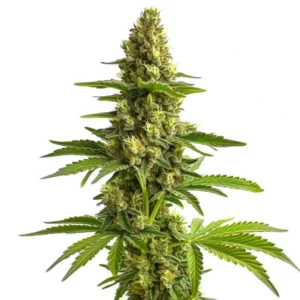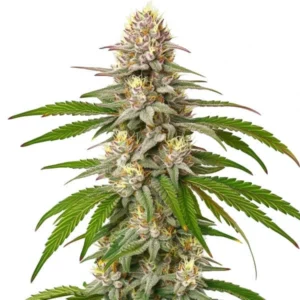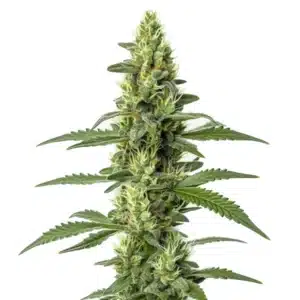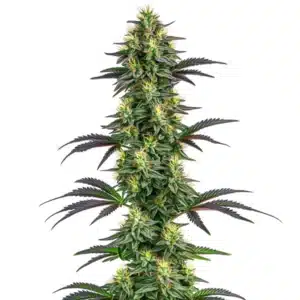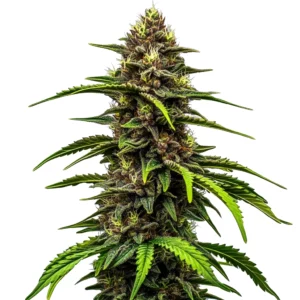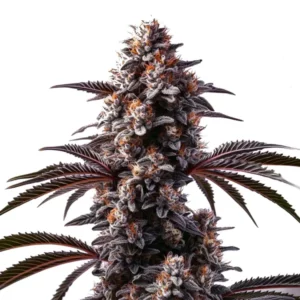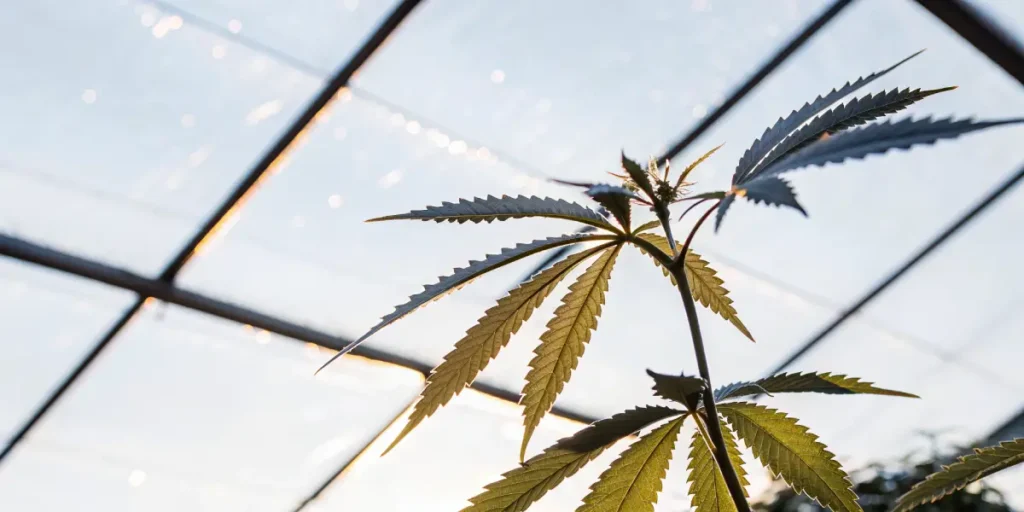
How Does Transpiration Impact Nutrient Uptake in Cannabis?
Transpiration is the process where water travels from the roots, through the plant, and exits through tiny pores called stomata on the leaves. This process plays a crucial role in nutrient uptake. When water evaporates from the leaves, it creates a pulling force that draws more water and nutrients from the roots, helping distribute essential elements throughout the plant. For growers asking “How does transpiration impact nutrient uptake in cannabis?”, the answer lies in this mechanism: efficient transpiration ensures steady nutrient flow, supporting healthy growth and optimal yields.
Imagine a cannabis plant as a complex network of highways. Water is the vehicle carrying nutrients to various destinations within the plant. Efficient transpiration ensures that nutrients like nitrogen, phosphorus, and potassium reach their intended targets, promoting healthy growth.
Recommended Strains
Girl Scout Cookies
|
|
THC | 18% - 25% (Medium) |
|
|
Type | Feminized |
|
|
Yield | High |
|
|
Phenotype | 60% Indica / 40% Sativa |
Bruce Banner #3
|
|
THC | 20% - 29% (High) |
|
|
Type | Feminized |
|
|
Yield | Medium |
|
|
Phenotype | 50% Indica / 50% Sativa |
Experienced growers often notice that plants with poor transpiration display signs of nutrient deficiencies, even when the soil is rich in nutrients. This highlights the importance of knowing how transpiration affects cannabis nutrient delivery. It’s not just about what you feed your plant; it’s about how well your plant can transport those nutrients.
Transpiration Role in Cannabis Nutrient Absorption
The efficiency of nutrient absorption in cannabis is heavily influenced by the rate of transpiration. When transpiration is optimal, nutrient uptake is maximized. This is because the process helps maintain a steady flow of nutrients from the roots to the shoots. The evaporation of water from the leaves creates a negative pressure, ensuring a continuous supply of nutrients.
Consider the cannabis strain Original GSC from Blimburn Seeds. This strain, known for its robust growth, benefits significantly from efficient transpiration. Growers cultivating Original GSC can expect better nutrient uptake, resulting in healthier foliage and more potent buds.
The transpiration role in cannabis nutrient absorption is not limited to just the major nutrients. It also plays a part in the uptake of secondary and micronutrients which are crucial for the plant’s overall health. These nutrients often require the movement of water to be effectively transported to the areas where they are needed most. Growers often ask, How does transpiration impact nutrient uptake in cannabis? The answer lies in the way water flow drives nutrient distribution, ensuring balanced growth and healthier plants.
Besides, the transpiration process assists in maintaining the plant’s turgor pressure, which is essential for keeping the plant upright and aiding in the opening and closing of stomata. This mechanism allows the plant to control water loss and nutrient uptake, highlighting how transpiration impacts nutrient uptake in cannabis on multiple levels.
Effect of Transpiration on Cannabis Nutrient Uptake
Transpiration has a direct effect on cannabis nutrient uptake. The process not only helps in nutrient absorption but also aids in regulating plant temperature. As water evaporates from the leaf surface, it cools the plant, preventing heat stress. This cooling effect is essential, especially in indoor growing environments where temperature control can be challenging.
Another key aspect is how transpiration impacts the plant’s ability to absorb micronutrients. These are nutrients required in smaller quantities but are vital for plant health. Without proper transpiration, micronutrients might not reach the necessary parts of the plant, leading to deficiencies.
Furthermore, the effect of transpiration on cannabis nutrient uptake can be observed in how well a plant can sustain growth during periods of environmental stress. Efficient transpiration allows the plant to continue to draw in and distribute nutrients even when external conditions are less than ideal, such as during unexpected temperature changes or periods of drought.
In hydroponic systems, where cannabis plants rely heavily on water for nutrient delivery, knowing the effect of transpiration on nutrient uptake becomes even more critical. This knowledge allows growers to optimize water and nutrient solutions, ensuring that plants receive adequate nutrition throughout their growth cycle.
Promos & Deals
Cannabis Plant Transpiration and Nutrient Transport
In cannabis cultivation, transpiration is more than just a biological process. It is a critical component of nutrient transport. The water movement through the plant acts as a delivery system, ensuring that each part of the plant receives the nutrients it needs to grow and develop properly.
Transpiration also plays a part in nutrient balance within the plant. A consistent flow of water and nutrients helps maintain this balance, which is crucial for optimal plant health. A disruption in this flow can lead to nutrient imbalances, affecting the overall growth and yield of the cannabis plant.
The relationship between cannabis plant transpiration and nutrient transport is symbiotic. As transpiration increases, nutrient transport becomes more efficient, allowing the plant to respond promptly to its nutritional needs. This dynamic is particularly beneficial during the flowering stage, where nutrient demands are higher.
Moreover, by knowing cannabis plant transpiration and nutrient transport, growers can tailor their irrigation practices to meet the specific needs of different strains. This targeted approach helps avoid over-watering or under-watering, both of which can disrupt transpiration and nutrient delivery.
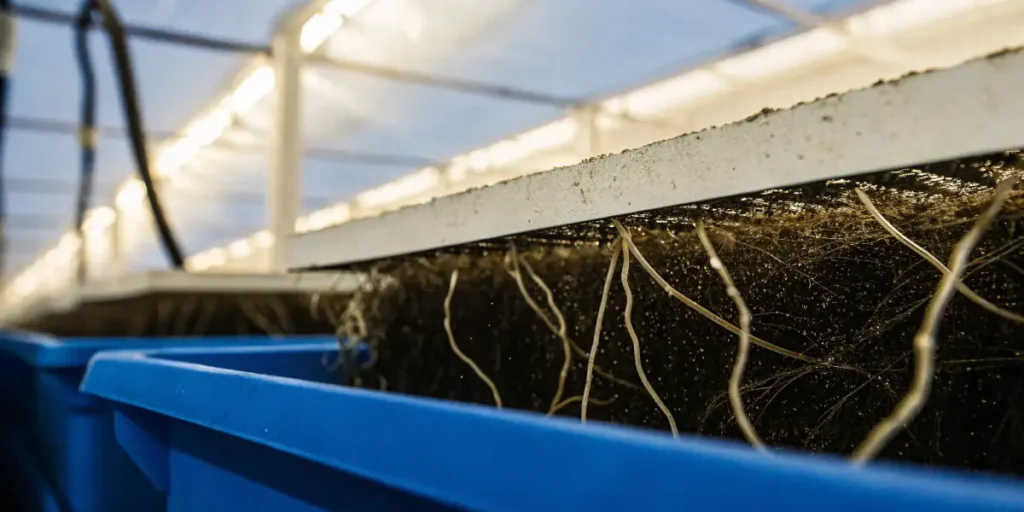
Transpiration Influence on Cannabis Nutrient Efficiency
When discussing the influence of transpiration on cannabis nutrient efficiency, it’s essential to consider environmental factors. Variables like humidity, temperature, and light intensity can all affect transpiration rates. Managing these factors helps ensure that your cannabis plants can efficiently uptake and utilize nutrients.
Growers often use techniques like leaf pruning to enhance transpiration. By removing excess foliage, plants can transpire more efficiently, leading to better nutrient uptake. This practice can be particularly beneficial for strains that require specific nutrient profiles to thrive.
Transpiration influence on cannabis nutrient efficiency extends to how well a plant can convert nutrients into biomass. Efficient transpiration leads to better nutrient efficiency, meaning the plant can produce more growth with the same amount of nutrients, which is a desirable trait for maximizing yields.
Additionally, the transpiration influence on nutrient efficiency can be seen in how effectively a plant can recover from nutrient deficiencies. When transpiration is optimized, plants can more quickly absorb and utilize nutrients to rectify deficiencies, minimizing potential damage to plant health and productivity.
How Transpiration Affects Cannabis Nutrient Delivery
Effective transpiration is essential for cannabis nutrient delivery. It ensures that nutrients are not only absorbed but also distributed evenly throughout the plant. This distribution is vital for growth, as it prevents nutrient deficiencies and promotes uniform development across the plant.
Growers often observe that plants with efficient transpiration show more uniform growth patterns and healthier foliage. This is because nutrients are delivered consistently to all parts of the plant, supporting robust growth and high yields.
The question of “How does transpiration impact nutrient uptake in cannabis?” is answered through the lens of delivery efficiency. As transpiration facilitates nutrient delivery, it directly influences how well nutrients are distributed and utilized by the plant, laying the foundation for vigorous growth.
In practice, how transpiration affects cannabis nutrient delivery is evident in the overall vigor and resilience of the plant. Plants with optimized transpiration not only grow more uniformly but also exhibit greater resistance to environmental stressors, ensuring better long-term health and productivity.
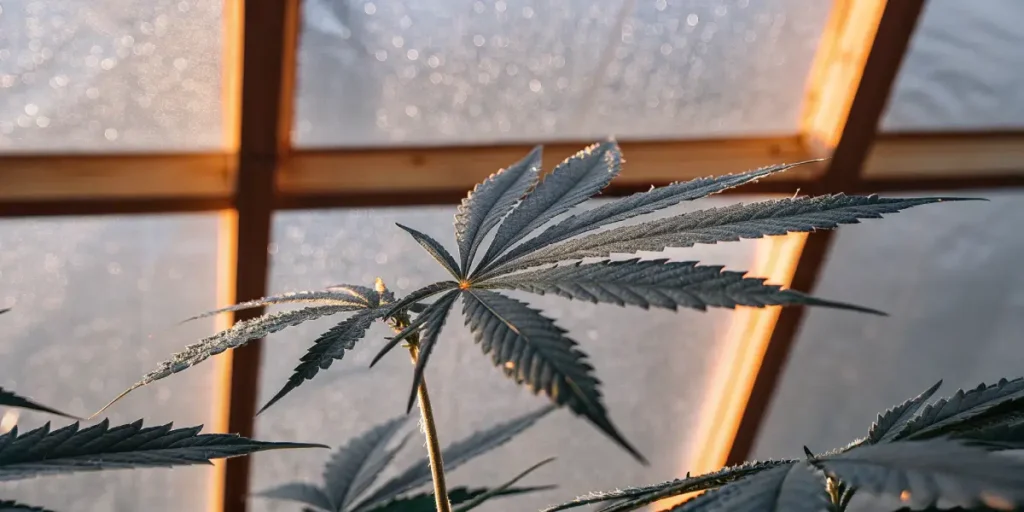
FAQs
What happens if a cannabis plant has poor transpiration?
Poor transpiration can lead to several issues in cannabis plants. One of the most common problems is nutrient deficiency. Even if the soil is rich in nutrients, without adequate transpiration, these nutrients may not reach the plant parts that need them.
Additionally, poor transpiration can cause overheating. Since transpiration helps cool the plant, any impairment in this process can lead to heat stress, affecting overall plant health and potentially reducing yield.
When a cannabis plant has poor transpiration, the lack of nutrient transport can result in stunted growth and a diminished ability to produce flowers. This can severely impact the quality and quantity of the final harvest, underscoring the importance of managing transpiration effectively.
Furthermore, poor transpiration can exacerbate issues related to pest and disease susceptibility. Without the adequate movement of water and nutrients, the plant’s natural defenses are weakened, making it more vulnerable to attacks by pests and pathogens.
How can I improve transpiration in my cannabis plants?
To improve transpiration, focus on optimizing environmental conditions. Ensure that your growing space has adequate ventilation to facilitate air movement. This helps in the evaporation process, enhancing transpiration rates.
Maintaining the right humidity levels is also crucial. If the air is too humid, it can slow down transpiration. Conversely, if it’s too dry, it can cause excessive water loss. Aim for a balanced environment to promote healthy transpiration.
Another technique to improve transpiration is to manage the plant’s leaf area. By selectively pruning leaves, you can reduce congestion and promote better air movement around the plant, which encourages efficient transpiration.
Additionally, utilizing fans and air conditioning units can help regulate temperature and humidity, creating an environment that supports optimal transpiration. These adjustments help maintain the delicate balance needed for effective nutrient uptake and plant health.
Are there specific strains that benefit more from efficient transpiration?
Yes, certain strains like the Original GSC, Bruce Banner 3, and Sour Diesel from Blimburn Seeds are known to benefit from efficient transpiration. These strains have specific nutrient needs and rely on effective transpiration to achieve their full potential.
Growers of these strains often report better growth and higher yields when transpiration is optimized. This is because these strains can efficiently uptake and utilize nutrients, thanks to an effective transpiration process.
In particular, strains with dense foliage or those that produce large buds can benefit significantly from efficient transpiration. These characteristics often require enhanced nutrient transport to support the plant’s demanding growth patterns.
Furthermore, strains bred for high resin production, like Bruce Banner 3, rely on a consistent nutrient supply facilitated by good transpiration. This ensures the plant can maintain its metabolic processes required for optimal resin and cannabinoid synthesis.
Does transpiration affect the flavor of cannabis?
Transpiration can indirectly affect the flavor of cannabis. By ensuring that nutrients are properly distributed, transpiration supports the development of terpenes and flavonoids, compounds responsible for the plant’s aroma and taste.
Efficient nutrient uptake through transpiration can lead to a more pronounced flavor profile. For strains like Sour Diesel, known for its distinct taste, maintaining good transpiration is key to achieving the desired flavor.
The development of secondary metabolites, which contribute to flavor and aroma, depends on the plant’s overall health and nutrient availability. Transpiration plays a critical role in ensuring these nutrients reach the areas of the plant where they are needed most.
In addition, how transpiration affects cannabis nutrient delivery directly influences the plant’s ability to produce the enzymes involved in terpene synthesis. This makes managing transpiration a crucial aspect of cultivating cannabis with rich and complex flavors.
Can environmental factors disrupt transpiration?
Yes, several environmental factors can disrupt transpiration. High humidity, low light levels, and poor air circulation can all impede the process. These conditions can slow down or even halt transpiration, affecting nutrient uptake.
To prevent disruptions, monitor your growing environment closely. Adjust humidity and temperature levels, and ensure proper air movement. These steps will help maintain an optimal environment for transpiration and nutrient delivery.
Light intensity is another crucial factor that can influence transpiration rates. Insufficient light can reduce photosynthesis, leading to lower transpiration rates, which can impact nutrient uptake and plant growth negatively.
By knowing the interplay between environmental conditions and transpiration, growers can make informed decisions about lighting, ventilation, and irrigation strategies to support healthy plant development and yield.



